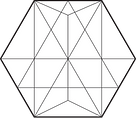It tells you where one thing is in relation to another. There are two ways to talk about location. There is absolute location and relative location.
LOCATION
PLACE
It explains what a location is like. Places have human and physical features. A couple of physical features are moutains, beaches, rivers, climates etc. Places can change due to earthquakes, tsunamis, hurricanes or change in climate.
Region
A region is an area with the same features. The features can be similaar to the plant life or the geographic area. By comparing regions, you can see how they are similar and different.
Movement
Movemnet means changes. The study of movement how people and goods travel. It also brings new ideas to other areas in the world.
Human Environment Interations
This looks at how the people interacts with the environment. In dry places, people might build dams to get alot of water so in dry peripds they can use the water. In wet places, people might build boats to travel from one place to another. Some changes we make can cause problems like pollution .


Geographers Tools & Maps
Gegraphers pick what scale to use by determining how much detail to show. They use a large scale when theres alot of detail and a small scale when fewer details are use.
Geographers use a grid system to identify absoulte location. The grid sysytem uses 2 imaginary lines which are // Lattidue lines and longitude lines
Projections is a way of showing the curved surface of the earth on a flat map. A flat map with disort some aspect of the earths's surace because its the shape of a shpere.
Geographers use GPS and GIS .
-
Gps is a satellite navigation system designed to provide accurate position, velocity, and time information almost anywhere in the world.
-
GIS is a spatial database with a strong visual display componant
-
A planer projection is a projection on a flat surface. It disorts size and shape .
-
The azimuthal projection shows the earth so that a line from the central point to any other poin on the map gives the shortest distance betweeen the 2 points.
-
Latitude lines, also called parallels because they run parallel to the equator.
-
longitudes lines, also called merdians because, like the prime meridian, they run from pole to pole.
